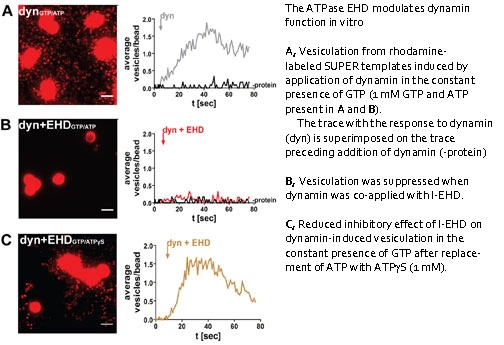Research focus
Presynaptic mechanisms
Information processing in the brain depends on release of neurotransmitters from synaptic vesicles at nerve terminals. A complex protein machinery controls the trafficking of synaptic vesicles throughout the synaptic vesicle cycle. This cycle involves SNARE protein-dependent membrane fusion in the active zone, and clathrin- and dynamin-mediated endocytosis in the periactive zone. The vesicle then sheds its coat and returns to the release site or passes via an endosomal sorting step.
We study the molecular mechanisms that control synaptic vesicle cycling and the relationship between these mechanisms and neurodegenerative disease mechanisms.
A current interest concerns the role of Eps15 homology domain proteins (EHDs), previously linked with endosomes in non-neuronal cells. We have found that a conserved EHD 1/3 orthologue (l-EHD) is associated with synaptic endocytic intermediates, and that acute perturbation of l-EHD impairs synaptic vesicle budding in the periactive zone. Accumulation of dynamin-containing helices at trapped endocytic intermediates indicates that l-EHD takes part in regulating dynamin function, which is supported by in vitro experiments (see Figure).
Another current interest concerns how amyloid precursor protein (APP) is processed in nerve terminals. Formation of Abeta peptides at synapses has been linked with the level of synaptic vesicle cycling in nerve terminals, and it has been proposed to contribute to the synaptic pathology in Alzheimer’s disease.

